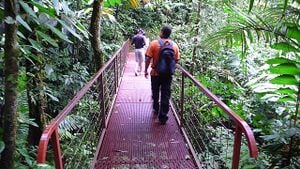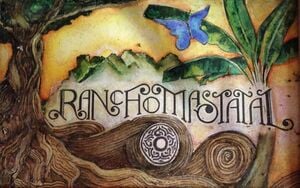The aim of this page is to recognise, celebrate and encourage the self-empowerment of community agency networks (CANs) and community groups across Costa Rica.

 This is how Latin America tries to turn its youth into young homeowners, globalvoices.org (Mar 01, 2024)
This is how Latin America tries to turn its youth into young homeowners, globalvoices.org (Mar 01, 2024)  Costa Rica restored its ravaged land to health. The rich UK has no excuse for such complete failure, George Monbiot, The Guardian (Apr 21, 2023)
Costa Rica restored its ravaged land to health. The rich UK has no excuse for such complete failure, George Monbiot, The Guardian (Apr 21, 2023)  The Beyond Oil and Gas Alliance now has 10 core members (Costa Rica, Denmark, France, Greenland, Ireland, Portugal, Quebec, Sweden, Wales, and Washington State), two associate members (California and New Zealand), and five "friends of BOGA" (Chile, Fiji, Finland, Italy, and Luxembourg)., beyondoilandgasalliance.org (Nov 16, 2022) — BOGA is an international alliance of governments and stakeholders working together to facilitate the managed phase-out of oil and gas production, led by the governments of Denmark and Costa Rica
The Beyond Oil and Gas Alliance now has 10 core members (Costa Rica, Denmark, France, Greenland, Ireland, Portugal, Quebec, Sweden, Wales, and Washington State), two associate members (California and New Zealand), and five "friends of BOGA" (Chile, Fiji, Finland, Italy, and Luxembourg)., beyondoilandgasalliance.org (Nov 16, 2022) — BOGA is an international alliance of governments and stakeholders working together to facilitate the managed phase-out of oil and gas production, led by the governments of Denmark and Costa Rica
Networks and sustainability initiatives[edit | edit source]
- Neighbourhood initiatives across Saint Joseph
- Los Higuerones, cooperative center and community hub located on the Osa Peninsula. added 15:08, 30 March 2022 (UTC)
Rancho Mastatal[edit | edit source]

Rancho Mastatal is an environmental learning and sustainable living center, rural sanctuary and lodge located in Mastatal, a community of about 105 people, and on the edge of the last remaining virgin rainforest of Costa Rica's beautiful Puriscal County. The land lies within a biological corridor (in two biozones, one drier and one wetter, which provides incredible plant diversity) next to La Cangreja National Park. They practice, promote and teach about living responsibly in the Tropics while educating visitors about the significance and majesty of the world's disappearing tropical forests. They exemplify appropriate technologies and permaculture techniques and help facilitate local efforts in conservation, education, natural medicine and community growth.
Tim and Robin started Rancho Mastatal in 2001 with a vision to serve as an inspiration for sustainable technologies. They also wanted their project to involve and improve the local community. The main house at the ranch used to be a pulperia. The ranch continues to benefit the public by serving as a learning resource, and employment opportunity for local community members. It also helps facilitate many community projects financially, and it is involved in the local community board, known as the Ecovisionary Group. The ranch typically has 7 full time local employees, 0-6 full time international staff, up to 10 interns for 6-12 month internships, and occasional volunteers that visit for more than a month.
Rancho Mastatal has many structures that were built using natural building techniques and local resources. International interns, staff, and visitors live in those structures, while working and learning at the ranch. The ranch also exemplifies permaculture techniques, and has a garden that grows various crops depending on the time of year. Some of the crops grown in July 2014 were: red cranberry hibiscus, katuk, esmeralda (quail grass), Haitian basket vine, citronella, and spinach/vietnamese cilantro. By experimenting with various crops the ranch hopes to increase local food security. They produce and use local resources whenever possible and strive to be and to help the community become completely self-sustaining.
The community also brings knowledge to Rancho Mastatal, including but not limited to what to grow when and how to grow it, what to avoid, how to find natural medicines, language, and local resources. Some of the ideas from Rancho Mastatal have also spread to the community including composting toilets, and some natural building techniques, and the ranch has already helped facilitate local economy growth.
Bioregioning[edit | edit source]
- Regenerative Costa Rica, bringing together a community with multiple capacities to reflect, plan and activate projects that facilitate the transition towards a regenerative paradigm. Blog: costaricaregenerativa.org, added 10:02, 14 May 2024 (UTC)
Climate action[edit | edit source]
- SCALA Costa Rica Project on adaptation-undp.org
Biodiversity[edit | edit source]
Costa Rica is home to a rich variety of plants and animals. While the country has only about 0.1% of the world's landmass, it contains 5% of the world's biodiversity. Around 25% of the country's land area is in protected national parks and protected areas, (developing world average 13%, developed world average 8%). W
Guanacaste Conservation Area[edit | edit source]
Guanacaste Conservation Area is an administrative area which is managed by the Sistema Nacional de Areas de Conservacion (SINAC) of Costa Rica for conservation in the northwestern part of Costa Rica. It contains three national parks, as well as wildlife refuges and other nature reserves. The area contains the Area de Conservación Guanacaste World Heritage Site, which comprises four areas.
Trees, woodland and forest[edit | edit source]
Costa Rica has successfully managed to diminish deforestation from some of the worst rates in the world. W
Ethical consumerism[edit | edit source]
Ecotourism in Costa Rica is one of the key activities of the tourism industry in the country. By the early 1990s, Costa Rica became known as the poster child of ecotourism. The country is among many developing nations that look to ecotourism as a way of cashing in on the growing demand for this popular trend of travel.
Ecotourism draws many tourists to visit the extensive national parks and protected areas around the country. Costa Rica was a pioneer in this type of tourism, and the country is recognized as one of the few with true ecotourism. While Costa Rica has gained immense popularity for its development of a successful, yet environmentally friendly, ecotourism industry, environmentalists and economists alike debate whether an economy centered on tourism produces more good than harm. [citation needed] W
Environmental issues[edit | edit source]
Threats to Costa Rica's biodiversity include a rapidly growing human population, developing coastlines for the industry of tourism and harmful agricultural practices all contributing to pollution and environmental degradation. The practice causing the largest concern for Costa Rica's environment is deforestation. Costa Rica has the fourth highest rate of deforestation in the world. Almost four percent of its current forested lands are cut each year. Clearing land for cattle ranching is the most common cause of deforestation. This form of environmental damage along with the farming of monocultures leads to areas where only a few species of plants are present. Ultimately, decreases in plant diversity leads to decreased animal diversity. W
About Costa Rica[edit | edit source]
Costa Rica, officially the Republic of Costa Rica (Spanish: Costa Rica or República de Costa Rica, is a country in Central America, bordered by Nicaragua to the north, Panama to the east and south, the Pacific Ocean to the west and south and the Caribbean Sea to the east. Costa Rica, which translates literally as "Rich Coast", constitutionally abolished its army permanently in 1949.
The country has consistently been among the top Latin American countries in terms of the Human Development Index, and ranked 54th in the world in 2007. It was cited by the United Nations United Nations Development Programme (UNDP) in 2010 as one of the countries that have attained much higher human development than other countries at the same income levels. It is ranked 3rd in the world, and 1st among the Americas, in terms of the 2010 Environmental Performance Index. In 2011, the country was highlighted by UNDP for being a good performer on environmental sustainability and having a better record on human development and inequality than the median of their region. It was also the only country to meet all five criteria established to measure environmental sustainability. The country is ranked fifth in the world, and first among the Americas, in terms of the 2012 Environmental Performance Index. Due to the high quality of its human capital, Costa Rica is the world's fourth largest exporter of high technology.
In 2007, the Costa Rican government announced plans for Costa Rica to become the first carbon-neutral country by 2021. The New Economics Foundation (NEF) ranked Costa Rica first in its 2009 Happy Planet Index, and once again in 2012. The NEF also ranked Costa Rica in 2009 as the greenest country in the world. In 2012, Costa Rica became the first country in the American continent to ban recreational hunting after the country's legislature approved the popular measure by a wide margin. W
Near you[edit | edit source]
